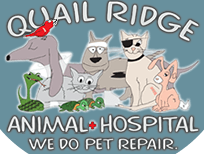Pet treats are widely used, and for good reason. Treats can be useful training tools, and pets typically like treats (and owners like to make their pets happy). But even something as simple as feeding pets treats carries some risks (and not just to the pet). Balancing the risks and benefits is the key. For example:
Pathogens
- I have to start with this one, since Worms & Germs are what we deal with here. Pet treats have been implicated in a few different outbreaks in people. Salmonella-contaminated pig ear treats are historically the main offender, but any animal-based treat that is not processed to kill pathogens (e.g. cooking, pasteurization, irradiation) is a concern.
- While pig ears used to be the primary culprit when it comes to contaminated treats, now, you can go into some pet stores and get dehydrated “insert almost any body part here” – lung, trachea, liver, ear, etc. Presumably these items carry a similar degree of risk for Salmonella if they are otherwise unprocessed.
Toxins
The main concern here is chicken, duck and sweet potato jerky treats from China, which have been implicated in a large number of pet illnesses and deaths, including at least 1000 dead dogs. No reason for the Fanconi-like syndrome associated with these treats has been identified, and therefore there’s no way to test the products to ensure the same problem won’t happen again.
Injuries
- Hard treats can result in tooth damage or fractures, which can be both painful and expensive to address.
- Treats with sharp edges (e.g. bone fragments) can cause damage to the intestinal tract as well.
Obstructions
- Dogs eat stuff they’re not supposed to all the time (at least mine does). Most often, it’s not a problem, but sometimes it is. If a pet swallows a large piece of a poorly digestible treat it can cause an intestinal blockage. Realistically, this is of limited concern for most edible treats, but is a bigger issue with toys and things like rawhides.
Obesity
- Weight gain and obesity aren’t usually considered when thinking about problems with treats, but a lot of treats are high in calories, and obesity isn’t just a problem with pet owners. As with human snacking, moderation is the key. Also remember that sometimes size does matter, as demonstrated in a recent study of bully sticks (dried bull penis) in which is was determined that these treats contained 9-22 calories per inch (Freeman et al., Can Vet J 2013).

Before giving it to your pet, think about the treat, how to use it and what problems might occur. Most treats, particularly those that are not raw animal product based (e.g. pig ears), not prone to fragmenting (e.g. bones, especially cooked bones) and not excessively hard (e.g. bones) are okay in moderation.
One question that’s come up recently is whether pig hair in or on treats can be a problem…
For some, pig hair on their dog’s treats has a bit of an “ick” factor (although it’s a little odd to see people freak out about some hair and then feed their dog a chunk of bull penis or the ear of a pig), but is there really a risk?
- I can’t see there being any realistic concerns.
- A dog would have to eat a massive amount of hair-laden treats to have any potential concerns about obstruction (and even then the risk would be remote at best).
- Hair could be contaminated with various bacteria, like other raw animal parts, but if the treat is cooked (or otherwise treated to kill bacteria) that becomes irrelevant. Certainly, it’s fair to ask whether hair is supposed to be there but I wouldn’t get worked up about it. I’d be more concerned about whether the treat is processed to kill pathogens and fed in moderation (to reduce caloric intake more than hair intake).
Make an appointment online today or contact us at (775) 267-4888!
